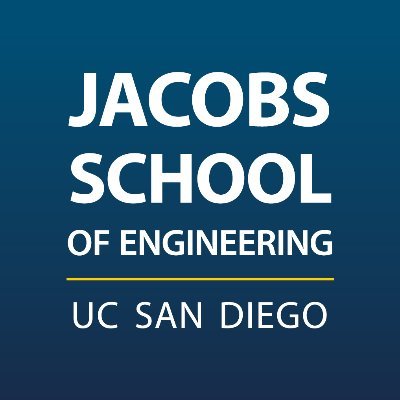News

February 20, 2007
Engineering Undergrads Cuddle Tomatoes in Search of Golden Calculator
Tomatoes falling from the sky. Duct-tape miracles. Paper-plate parachutes. Whipped cream in faces. A big blue balloon over Warren Mall. Is that a pair of sumo wrestler in the distance? Welcome to E-Games 2007, a day of engineering inspired competitions between a variety of UCSD Jacobs School of Engineering student organizations. E-Games, organized by the Triton Engineering Student Council, is the kick-off event for National Engineers Week at UCSD. Full Story


February 8, 2007
University of California, San Diego Engineering, Technology and Computer Sciences Ranked 9th in the World
The University of California, San Diego Jacobs School of Engineering is the 9th best in the world for engineering/technology and computer sciences, according to an academic ranking of the top 100 world universities published online this month by the Institute of Higher Education, Shanghai Jiao Tong University. Full Story

January 29, 2007
Simulating Human Metabolism
Bioengineering researchers at UCSD have painstakingly assembled a virtual human metabolic network that will give researchers a new way to hunt for better treatments for hundreds of human metabolic disorders, from diabetes to high levels of cholesterol in the blood. Full Story

January 22, 2007
Information Sessions for Calit2 UCSD Summer Undergraduate Research Scholarships
Calit2's Summer Undergraduate Research Scholars program is going on seven years, and expand in 2007 to include more students as well as higher stipends. The deadline to apply is March 5, and information sessions will be held this Thursday, January 25, and Feb. 14 in Atkinson Hall. Full Story

January 18, 2007
Successful Kickoff for New Joint Initiative on Medical Device Development
Fostering novel cross-disciplinary research collaborations, the UCSD division of Calit2 has become the home of the new Medical Device Affinity Group, a three-way initiative borne of Calit2, the UCSD School of Medicine's Department of Surgery and the Jacobs School of Engineering. Full Story

January 5, 2007
Y.C. Fung Wins Russ Prize
The National Academy of Engineering has announced that UCSD's Yuan-Cheng "Bert" Fung will receive the 2007 Russ Prize. Full Story

December 19, 2006
Building Better Phylogenetic Trees
Biologists will be able to reconstruct the process of evolution, determine relationships between species and build phylogenetic trees with greater accuracy thanks to a new method for identifying “microinversions,” which are extremely short strings of inverted nucleotides.This new work from researchers at UC San Diego and Brown University will be published online by PNAS the week of December 18, 2006. Full Story

December 6, 2006
Fibers Used in Bullet-Proof Vests Quadruple Toughness of Dental Composites
In a paper in Dental Materials, UCSD structural engineering professor Vistasp Karbhari and Howard Strassler, a professor and director of Operative Dentistry at the University of Maryland Dental School, report results of detailed engineering tests on dental composites containing polyethylene fibers, which are also used in bullet-proof vests. Full Story

December 5, 2006
Joint Cartilage Gets Slippery during Flex Time
Bioengineering researchers at UC San Diego have shown that sliding forces applied to cartilage surfaces prompt cells in cartilage to produce molecules that lubricate and protect joints. Full Story
